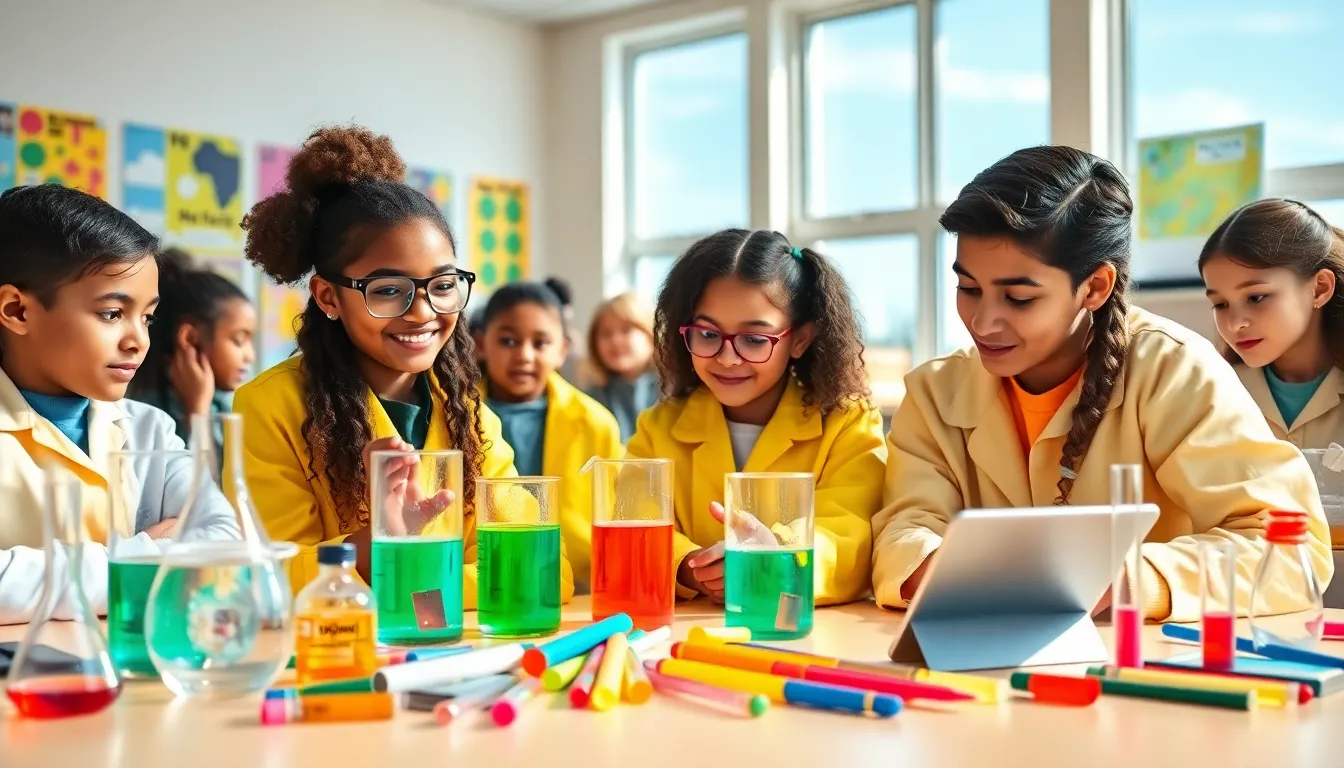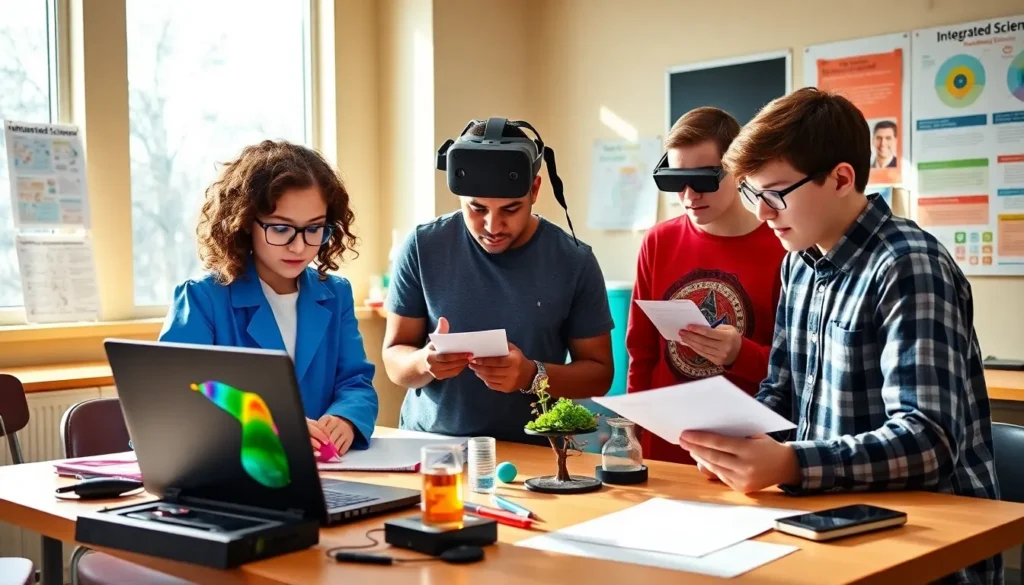Table of Contents
ToggleIn an era where educational methodologies are rapidly evolving, Redwebzine Integrated Science stands out as a groundbreaking approach to science education. It seamlessly intertwines various scientific disciplines with the goal of fostering a deeper understanding of scientific principles. In this text, we will explore what Redwebzine Integrated Science is, its significance in modern education, the key components that comprise it, and how it enhances learning and engagement among students. By examining real-world applications and future directions, this article aims to provide a comprehensive overview of this innovative educational model.
What Is Redwebzine Integrated Science?

Redwebzine Integrated Science is a pedagogical framework designed to combine various scientific disciplines, such as biology, chemistry, physics, and earth science, into a cohesive learning experience. Unlike traditional science classes, which often treat these disciplines as separate entities, Redwebzine aims to show students how interconnected these fields are.
In this context, integrated science encourages learners to explore scientific concepts within interdisciplinary themes, promoting critical thinking and problem-solving skills. Through interactive platforms and digital resources, Redwebzine offers a dynamic learning environment where students can engage with real-world scientific problems, drawing upon knowledge from multiple disciplines to find innovative solutions.
The Importance of Integrated Science
The significance of integrated science cannot be overstated, especially in a world increasingly driven by technology and interdisciplinary collaboration. Here are some key reasons why integrated science, including the Redwebzine approach, is vital for contemporary education:
- Holistic Understanding: By integrating various scientific fields, students develop a more comprehensive understanding of complex concepts, aiding in retention and practical application.
- Real-World Application: Integrated science equips students with the skills necessary to tackle real-world problems that do not recognize disciplinary boundaries, such as climate change, health crises, and technological innovation.
- Collaboration Skills: In an integrated science context, students often work in teams, mirroring real-life scientific research environments, so fostering collaboration and communication skills.
- Adaptability: With the rapid pace of scientific advancement, having an integrated knowledge base allows students to adapt more readily to new information and evolving technologies.
This multifaceted education approach is increasingly becoming essential for those entering the workforce in various scientific fields.
Key Components of Redwebzine Integrated Science
Redwebzine Integrated Science comprises several essential components that help effective learning. These include:
- Interdisciplinary Curriculum: The curriculum is designed to incorporate themes that pull from multiple scientific domains, ensuring that students are not confined to singular perspectives.
- Digital Learning Resources: Digital tools and resources are integral to Redwebzine, providing interactive simulations, virtual labs, and engaging content that make learning accessible and interesting.
- Inquiry-Based Learning: This methodology encourages students to ask questions and conduct experiments, promoting a hands-on learning experience that enhances engagement.
- Assessment for Learning: Rather than traditional tests, Redwebzine utilizes alternative assessment methods, such as projects and presentations, to gauge student understanding and application of knowledge.
- Collaborative Projects: Students often engage in group projects that require them to apply knowledge from various subjects, boosting teamwork skills and fostering innovation.
These components work synergistically to enhance the learning experience and prepare students for future scientific endeavors.
How Redwebzine Enhances Learning and Engagement
Redwebzine Integrated Science takes a proactive approach to learning, focusing on engagement techniques that capture the interest of students. Here are several ways it enhances learning:
- Gamification: Utilizing game design elements, Redwebzine transforms traditional learning tasks into interactive challenges, motivating students through rewards and competition.
- Multimedia Learning Materials: By incorporating videos, podcasts, and interactive websites, this approach caters to various learning styles, making science accessible to everyone.
- Real-World Relevance: Lessons are designed around current events and real-world problems, enabling students to see the value and application of their studies beyond the classroom.
- Feedback Loops: Continuous feedback through discussions and peer reviews allows students to reflect on their learning processes and make adjustments, aligning with modern educational practices that prioritize student experience.
As a result, students become more invested in their education, leading to improved academic performance and a greater interest in pursuing science as a career.
Case Studies and Examples
Several educational institutions and programs have successfully implemented Redwebzine Integrated Science, showcasing its effectiveness through real-world applications. For instance:
- Local High School Partnership: A high school adopted the Redwebzine model for its science curriculum, resulting in a 30% increase in student engagement and a significant improvement in overall science grades.
- Community Science Projects: Students collaborated on community projects addressing environmental issues, such as soil health and local biodiversity, using integrated science approaches to formulate actionable plans.
- University Research Programs: Universities incorporating integrated science frameworks in research initiatives have reported higher levels of interdisciplinary collaboration, leading to more innovative research outcomes.
These examples illustrate the transformative potential of Redwebzine Integrated Science in various educational settings.
Future Directions for Redwebzine Integrated Science
Looking ahead, Redwebzine Integrated Science is poised for further evolution. Future directions might include:
- Greater Emphasis on Sustainability: As global challenges related to climate change intensify, integrating sustainability topics into the curriculum can prepare students to address these urgent issues.
- Expansion of Digital Technologies: Incorporating augmented reality (AR) and virtual reality (VR) into science education could allow for immersive and interactive learning environments, pushing the boundaries of traditional education.
- Collaborative Global Initiatives: Expanding partnerships with international educational institutions may lead to cross-cultural scientific studies, enriching student experiences and broadening their perspectives.
- Focus on Equity in STEM: Future Redwebzine initiatives could emphasize inclusivity, ensuring that underrepresented groups gain equal access to integrated science education.
These prospective developments suggest a promising future for integrated science, making it an exciting area of exploration for educators and students alike.
Conclusion
To conclude, Redwebzine Integrated Science represents a forward-thinking approach to science education that prioritizes interconnectedness and practical application. By fostering critical thinking, collaboration, and innovation, it equips students with the tools they need to navigate an increasingly complex world. As educational paradigms shift to accommodate new challenges and opportunities, the principles of integrated science offer an invaluable framework for cultivating the next generation of scientific thinkers and problem solvers.







